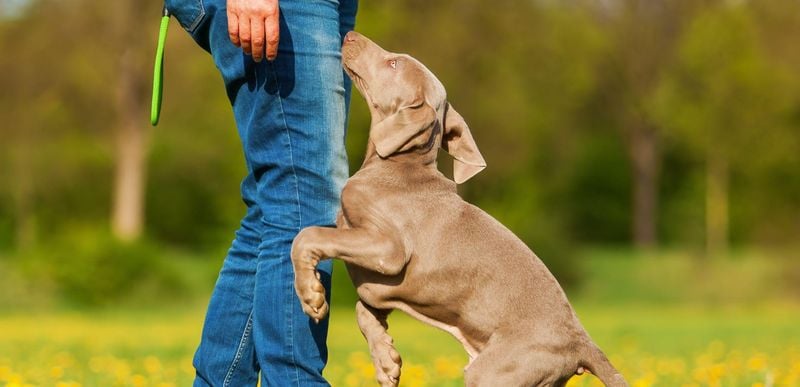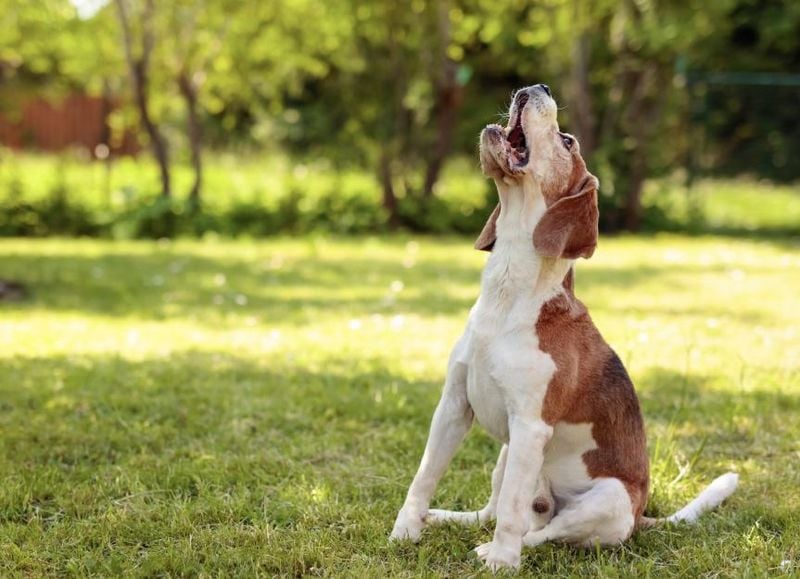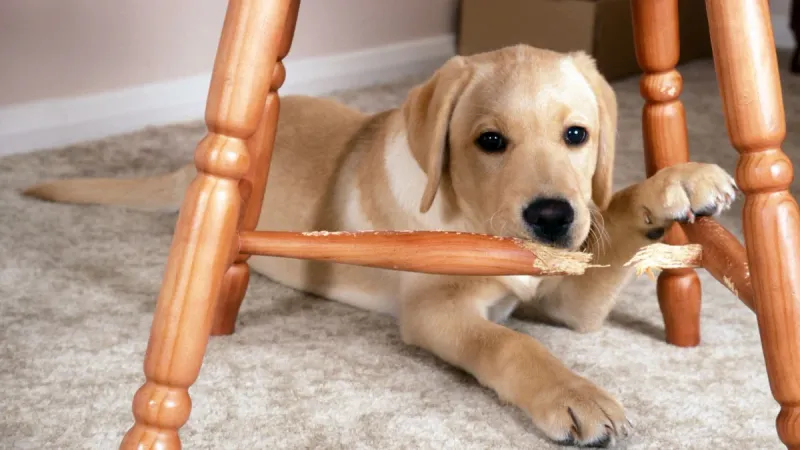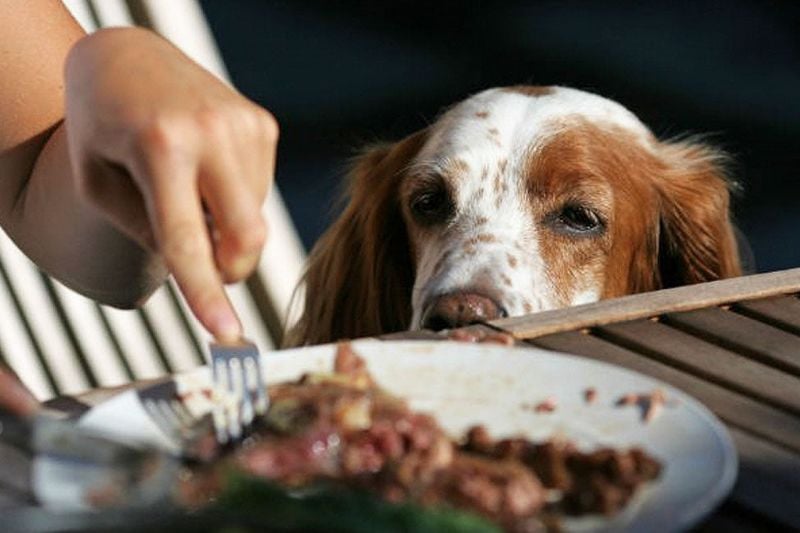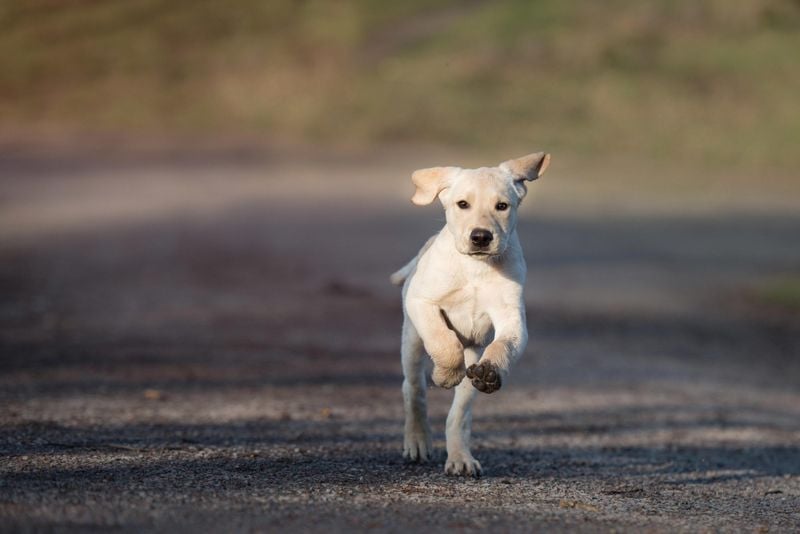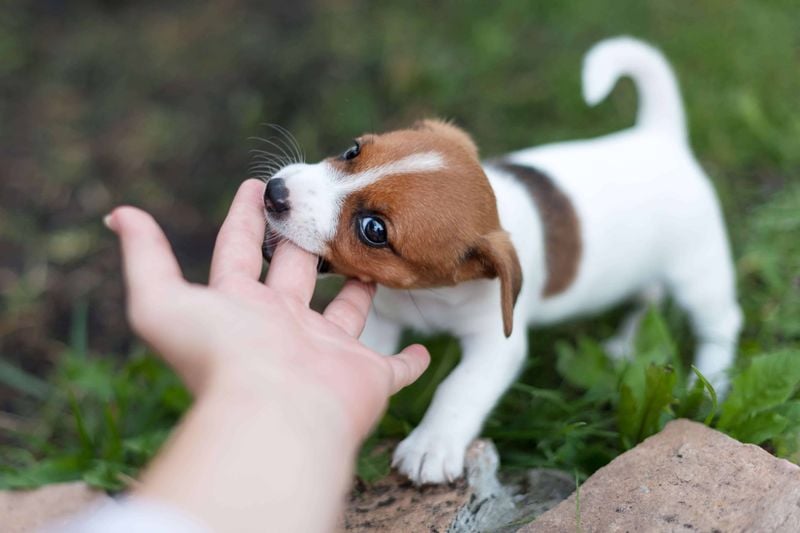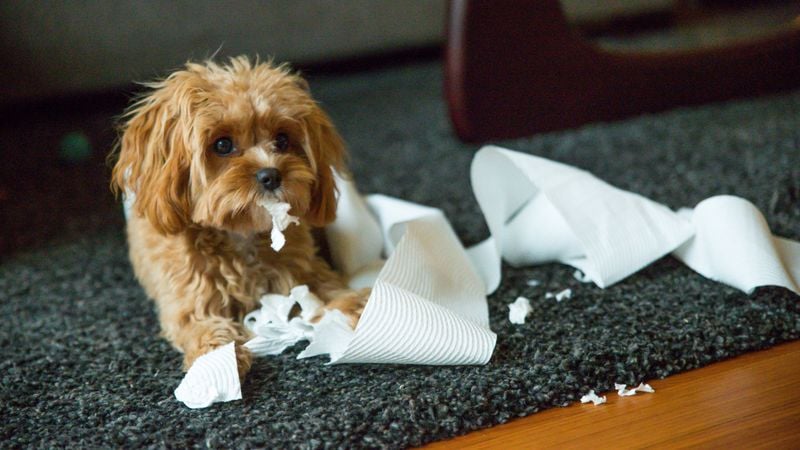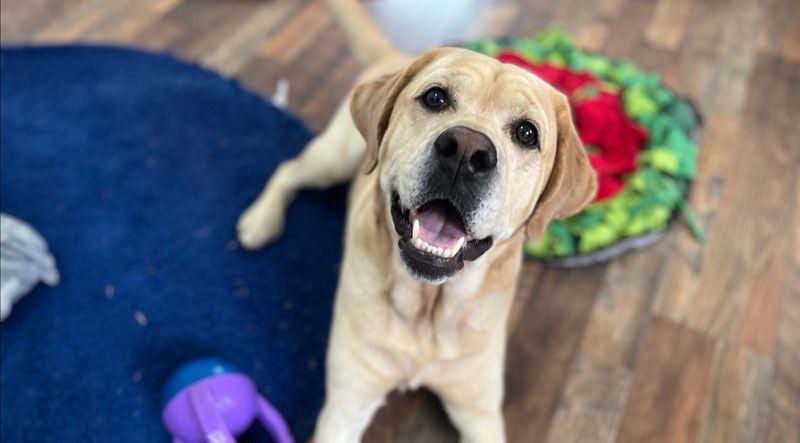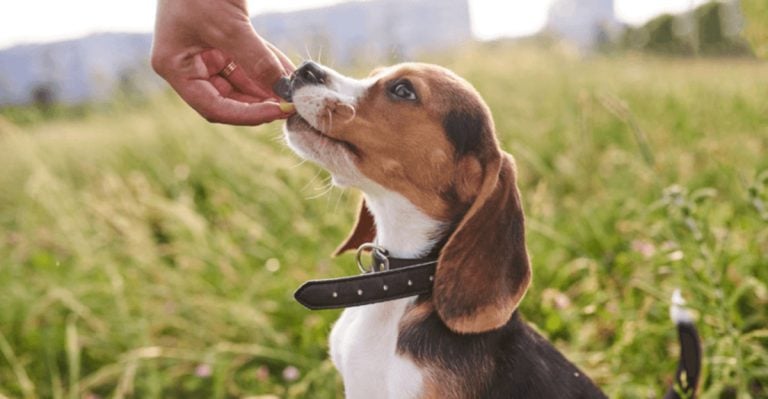17 Bad Dog Behaviors And How You Can Correct Them
Dogs are incredible companions—loyal, goofy, loving, and often the highlight of our day.
But let’s be honest: they’re not always perfect angels.
Sometimes, your furry best friend might push the boundaries just a little too far—and suddenly, your shoes are shredded, your dinner’s gone, and your neighbors are giving you the side-eye because of the endless barking.
It’s not that they’re “bad” dogs. In fact, most of these behaviors come from confusion, lack of training, or just plain boredom.
The good news? Almost every annoying or problematic dog behavior can be corrected with the right strategy and a whole lot of patience.
This list breaks down 17 common bad habits—from pulling on the leash like it’s the Iditarod to treating your furniture like a chew toy—and shows you exactly how to fix them.
You don’t need to be a professional trainer or spend a fortune on obedience school. A little consistency, a few smart techniques, and some tasty treats can work wonders.
Understanding why your dog acts out is the first step toward building better behavior.
And remember: dogs thrive when they know what’s expected of them. Clear rules, lots of praise, and proper outlets for their energy and instincts can make all the difference.
So before you give up on ever having a peaceful walk again or resign yourself to a home that smells mysteriously like pee—read on.
Whether you’ve got a new puppy testing limits or an older dog with a stubborn streak, these tips are here to help.
1. Jumping on People
When your dog’s enthusiasm means jumping all over visitors, it’s time to teach some manners. Imagine a tranquil meeting where your dog sits politely for greetings.
Start by training them to “sit” for attention, ensuring that only calm behavior is rewarded. Ask guests to ignore your dog until all four paws are firmly on the ground. Consistency is crucial in these situations, as everyone must follow the same rules.
This method helps dogs learn that calmness leads to affection. Gradually, your dog will understand that their eager leaps aren’t necessary for love and attention.
Over time, their jumping habit will transform into patient anticipation, creating a more peaceful environment for everyone involved.
2. Excessive Barking
Barking might be a dog’s way of communicating, but excessive noise can be overwhelming. Identifying the cause—whether it’s boredom, fear, or alertness—is the first step.
Once you’ve pinpointed the trigger, you can address it by teaching a “quiet” command. Rewarding moments of silence can reinforce this behavior.
For instance, if your dog barks at passing cars, practice the “quiet” command in a controlled environment, gradually increasing distractions. Patience is key, as is celebrating small victories.
With time, your dog’s excessive barking can be transformed into peaceful coexistence, with silence earning rewards and praise.
3. Leash Pulling
Taking a leisurely walk should be enjoyable for both you and your dog, but leash pulling can turn it into a tug-of-war.
One effective technique is to stop walking as soon as the leash tightens. Let your dog realize that moving forward only happens when they walk beside you.
Reward this behavior consistently to reinforce the desired action. Additionally, using a front-clip harness can offer more control during training sessions.
These methods, paired with patience and persistence, can transform walks into harmonious experiences.
Instead of a battle, enjoy a leisurely stroll, strengthening the bond between you and your furry friend.
4. Chewing Furniture or Shoes
Puppies and their love for chewing can sometimes lead to household chaos. Providing appropriate chew toys helps redirect their energy and protect your belongings.
Consider using deterrent sprays on furniture and shoes to make them less appealing.
When you catch your puppy in the act of chewing something inappropriate, calmly redirect them to their toys and reward them for making the right choice.
This positive reinforcement encourages them to distinguish between acceptable and unacceptable items. Over time, your puppy will learn to focus their chewing energy appropriately, preserving your household items.
5. Digging Holes
While digging might seem like a fun pastime for your dog, it can wreak havoc on your garden. Providing a designated digging area or sandbox can channel this natural behavior.
Encouraging them to dig in their special zone helps preserve your beautiful landscape.
Make the sandbox enticing by hiding toys or treats for your dog to discover. It’s also essential to ensure your pet’s mental and physical exercise needs are met to reduce boredom digging.
By fulfilling their instinctual desires and providing an outlet, your garden remains intact, and your dog stays entertained.
6. Begging at the Table
Begging at the table is a common canine trait that’s best curbed with consistency. Ignoring your dog’s pleading eyes and not giving in to their demands is essential. Feeding them before you eat can also reduce the temptation.
Train your dog to stay in a separate area during mealtimes, which reinforces the idea that dining is a human activity. Over time, your dog will understand that begging is fruitless, leading to more peaceful and enjoyable family meals.
Consistent training ensures your pet remains calm and content, understanding their place during dinner.
7. Aggression Toward Other Dogs
Handling aggression towards other dogs requires a careful and thoughtful approach. Engaging a professional trainer can provide valuable guidance and support.
Through desensitization and counter-conditioning techniques, your dog can learn to remain calm in the presence of other dogs.
Training in controlled environments helps them understand that other dogs aren’t a threat. With patience and persistence, your dog can transform aggressive reactions into more relaxed interactions.
This approach not only improves their social skills but also enhances your confidence when navigating social situations with your pet.
8. Separation Anxiety
Separation anxiety can be challenging, but with gradual training, you can ease your dog’s distress. Start by practicing short departures, slowly increasing the time you spend away from home.
Avoid making a big fuss when leaving or returning to keep emotions calm.
Interactive puzzle toys can keep your dog occupied, distracting them from your absence.
Patience and consistency are key, and over time, your dog will learn to feel secure even when alone. This process fosters independence and reduces anxiety, leading to a happier, more relaxed pet.
9. Resource Guarding
Resource guarding can lead to tension, but training commands like “drop it” or “leave it” can alleviate this behavior. Encouraging your dog to trade items for treats helps them understand that sharing leads to rewards rather than loss.
Never forcibly remove objects from your dog’s possession, as this can increase anxiety. Instead, practicing positive reinforcement and building trust can reduce guarding tendencies.
Gradually, your dog will learn to associate resource sharing with positive outcomes, enhancing their comfort and cooperation.
10. House Soiling
House soiling is a common issue that requires a consistent schedule. Ensure regular bathroom breaks and praise your dog immediately after outdoor success. This reinforces positive behavior and helps establish routine habits.
If the issue persists, consult a veterinarian to rule out medical problems. Understanding your dog’s needs and responding with timely bathroom breaks can effectively resolve house soiling.
With patience and a structured approach, your pet will learn the appropriate place for bathroom activities.
11. Mounting or Humping
Mounting or humping can stem from stress, excitement, or dominance. Redirecting this behavior with commands like “sit” or “off” can promote more appropriate actions.
Addressing underlying stress factors is also crucial in mitigating this behavior.
Encouraging calmness through training and ensuring your dog’s environment is stress-free helps reduce mounting incidents.
Consistent guidance and understanding of your pet’s needs can lead to positive behavioral changes, fostering a more harmonious household.
12. Chasing Cars, Bikes, or Joggers
Chasing moving objects is an instinct many dogs find irresistible. Teaching impulse control with commands like “watch me” can redirect their focus.
Starting in a distraction-free environment ensures a strong foundation before gradually introducing triggers.
Practice patience and consistency to help your dog manage their impulses. Over time, they’ll learn to ignore passing cars, bikes, or joggers, transforming a potentially dangerous behavior into calm focus.
13. Jumping on Furniture Without Permission
Dogs love comfort, but jumping on furniture without permission can disrupt household harmony.
Teaching the “off” command helps establish boundaries while rewarding their decision to stay on a designated mat or bed reinforces good behavior.
Consistency is key, and by clearly defining allowed zones, your dog will understand where they can relax. Establishing these boundaries ensures a peaceful coexistence, with your dog respecting the rules of your home.
14. Ignoring Recall
When your dog ignores recall, it can be frustrating and concerning. Transforming this behavior requires practice, starting with recall games using high-value treats.
These incentives make returning to you rewarding, encouraging your dog’s prompt response.
Never punish a dog who comes back, as you want them to associate returning with positive experiences. Consistent practice and rewarding responses strengthen their recall, ensuring safety and obedience during outdoor adventures.
15. Play Biting
Puppies often explore through play biting, but teaching limits is essential. Mimicking littermate behavior, yelping or stopping play when bitten teaches your puppy boundaries. Offering chew toys redirects their playful energy.
Patience and positive reinforcement help them understand acceptable play.
This guidance ensures your puppy grows into a dog with controlled and gentle interactions, enhancing their social skills and fostering a loving bond with family members.
16. Eating Non-Food Items (Pica)
Eating non-food items, or pica, can pose health risks. “Leave it” training helps manage this behavior, teaching your dog to ignore tempting objects. Keeping hazardous items out of reach prevents accidents.
Ensure your dog’s diet meets nutritional needs and provide mental stimulation to reduce boredom. Addressing underlying causes fosters a safe environment, encouraging your dog to distinguish between edible and inedible items.
17. Overexcitement When Guests Arrive
Guests arriving can turn into an excitable event for your dog. Practicing calm greetings with leashed introductions sets the tone. Rewarding calm behavior reinforces positive interactions.
Utilizing place commands creates space and prevents overwhelming guests. Consistent training ensures your dog remains composed, transforming what once was chaotic excitement into graceful welcomes.

